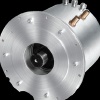Индустриален клъстер "Електромобили" - Учредители:








 |

|

|
| Актуално | За клъстера | Екип | Членове | Документи | Анализи | Услуги | Стани член | Награди | ССЕМ | Контакти |
ИКЕМ - Индустриален клъстер "Електромобили" | Четвъртък, 18.12.2025 | |
|
Plug-in Electric Vehicles: A Practical Plan for Progress
INTRODUCTION Early History of the Electric Car Interest in electric propulsion of cars and trucks is on the rise throughout the global automobile industry, but the idea is certainly not new. The electric car was invented in the 1830s, decades before the invention of gasoline and diesel engines. By the turn of the century (1900), the number of automobiles powered by electricity in the United States was almost double the number powered by gasoline (though both were outnumbered by steam-powered vehicles).The commercial success of electric vehicles was greater in the United States than in any other country. However, U.S. sales peaked in 1912 and steadily declined to near-extinction in the following decade. Historians attribute the initial demise of the electric vehicle to a variety of factors, including their lack of horsepower, the improved availability of gasoline, and the demand for longer-distance vehicles.By the 1920s, improved road networks between American cities were stimulating consumer demand for longer-range vehicles.Due to their short range, electric cars sold in the United States from 1900 to 1930 were owned primarily by affluent urban residents. The decline of real oil prices also played a role. The discovery of accessible crude oil in California, Oklahoma, and Texas caused the price of gasoline to become more affordable for ordinary Americans. Innovations also helped the gasoline engine. The invention of the muffler in 1897 led to a reduction in engine noise, while invention of the electric starter in 1912 eliminated the need for the hand crank. While progress with the electric car was also occurring, three stumbling blocks were persistent: low top speed, short range on a single charge, and relatively high cost of production. Henry Ford’s mass production of the internal combustion engine allowed gasoline cars to be sold for $500–$1,000, while the typical electric car—even one without frills—was typically priced well above $1,000. The gasoline-powered model became the engine of preference for automobiles. By 1935, the electric automobile had virtually disappeared, and interest in electric propulsion would not return for 25 years. Unlike the 1900–30 period when consumer demand spurred interest in the electric car, the resurgence of interest in electrification that began in 1960 is attributed primarily to public concerns about air quality. Poor air quality in urban areas was a key factor, especially in smog-ridden Los Angeles and other cities where cars were popular, geography was unfavorable to dispersion of pollution, and mass transit systems had become impractical or underfinanced.With strong public support, environmentalists advocated alternative approaches to fueling cars that would reduce or even eliminate pollution from the tailpipes of cars. In 1966, Congress introduced the first bills supporting electric cars as a method of air pollution control.The California Air Resources Board (CARB) issued a variety of regulations aimed at spurring cleaner engines, including electric cars and other so-called “zero-emission vehicles” (ZEVs).The U.S. Environmental Protection Agency (EPA) also issued regulations to spur cleaner engines but EPA rules often lagged behind those issued by CARB. The world oil crises of the 1970s, especially the quadrupling of nominal oil prices following the 1973–74 Arab oil embargo, caused politicians in the United States to search for alternative ways of fueling America’s economy. Since America’s electricity sector was to be weaned off oil in favor of coal and natural gas, the electric car was seen as a positive step toward America’s “energy independence.” In 1975, for example, the U.S. Postal Service purchased 350 electric delivery jeeps from American Motors Corporation, jeeps with a top speed of 50 miles per hour, a maximum range of 40 miles, and a 10-hour recharging time.However, the high cost of batteries and short driving range remained insurmountable barriers to commercial success. |
Продукти 
Комплектна система за задвижване на електромобилиСистемата за електрозадвижване обхваща гама с три основни типоразмера на ел. мощност със съответните компоненти - електромотор и контролер. oще ...Виж всички продуктиАнкета с продължение...
|
|
|
 ЕВРОПЕЙСКИ СЪЮЗ Европейски фонд за регионално развитие Инвестираме във вашето бъдеще |
 |
 ОПЕРАТИВНА ПРОГРАМА „Развитие на конкурентоспособността на българската икономика” 2007-2013 www.opcompetitiveness.bg |
|
Интернет страницата е създадена с финансовата подкрепа на ЕФРР, в рамките на проект „Развитие на Индустриален Клъстер Електромобили” по ДБФП К-02-2/28.09.2011 г. |
|||